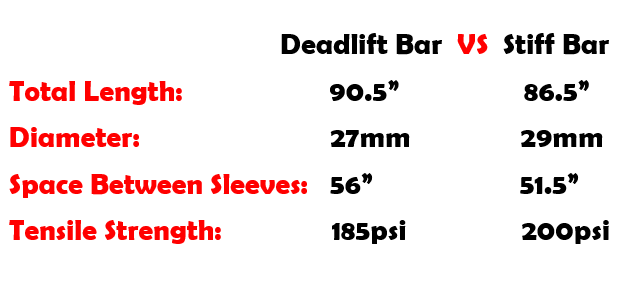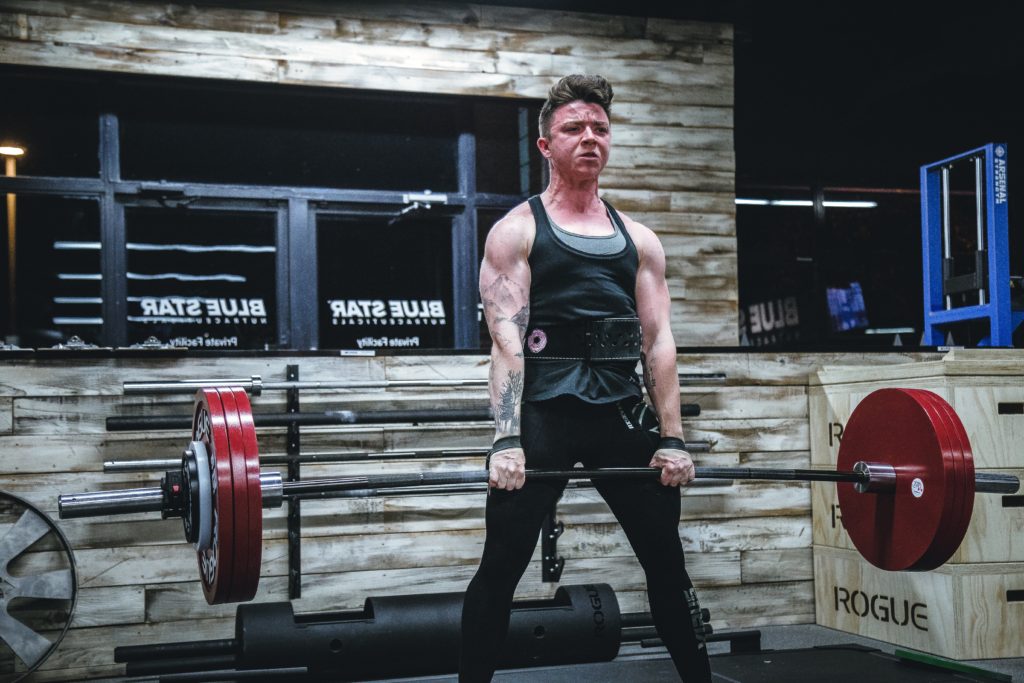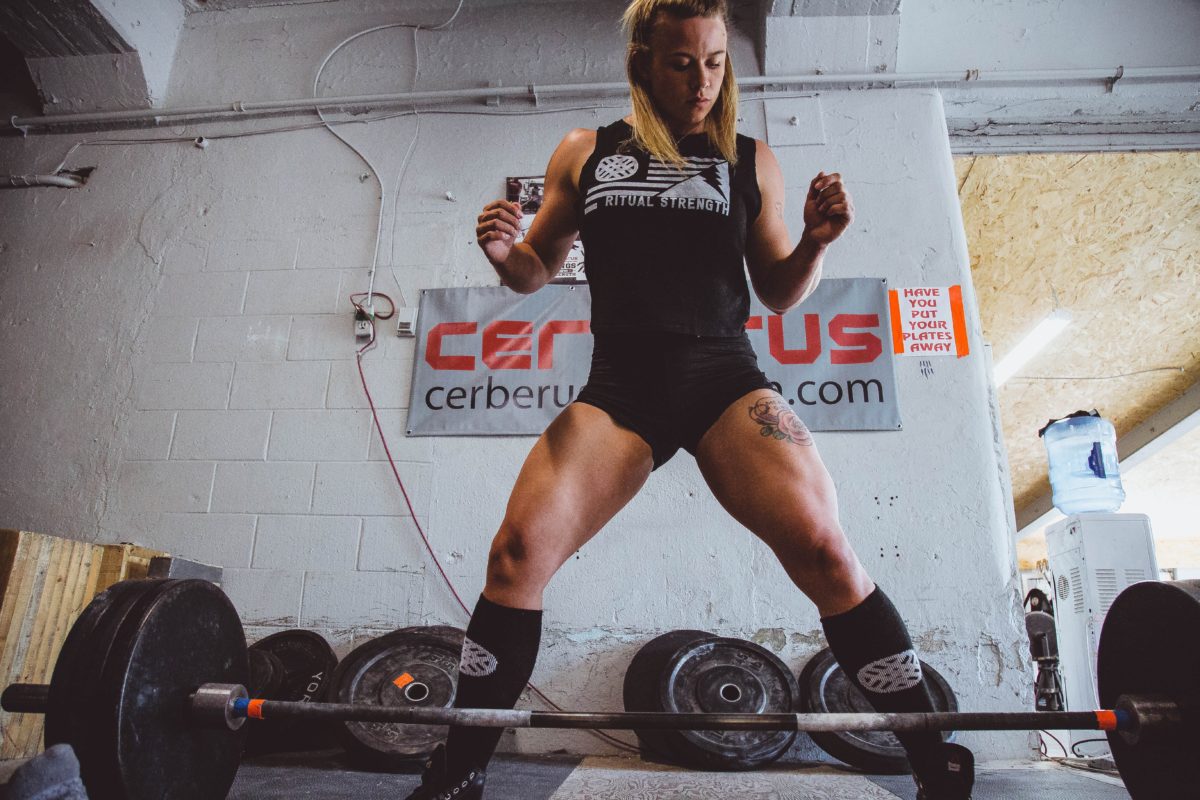The deadlift is one of the best exercises out there to build muscle and get stronger. Repetition for repetition, you’d be hard-pressed to find another movement that can add mass to your posterior chain quite like the deadlift.
But enough about the movement, let’s talk equipment. More specifically, the barbell. After all, the long metal stick is the core of the deadlift, and the type you choose to use can affect your result.
Today, we’ll talk about the deadlift bar vs. stiff bar, and you’ll learn everything you need to know to make an informed decision.
The Deadlift Bar vs. Stiff Bar: What Is It and What is the Difference?
At first glance, the two don’t seem different. But once you take a deeper look, you start seeing the major differences between the bars.
Diameter
The standard deadlift bar has a diameter of 27 mm, where a regular stiff bar is 29 mm thick. The smaller diameter allows you to grip the bar better, even if you have small hands or stubby fingers.
A big advantage for a heavy deadlift.
Total Length
Where a stiff bar is roughly 86.5” long, a deadlift bar 90.5”. There’s an advantage here, which we’ll talk about below.
Space Between Sleeves
The sleeves are the two endpoints on the barbell where weight plates are loaded. Again, much like total length, having more space between sleeves is an advantage. The distance between the sleeves of a regular bar is 51.5”, where a deadlift bar has a space of 56”.
Tensile Strength
Tensile strength is just a fancy term referring to a material’s ability to withstand and not break under tension. A regular bar has a tensile strength of 200 to 210k psi and has virtually no whip, where a deadlift bar usually has 185-190k psi and has much more whip in comparison.
Whip
Whip refers to the barbell’s ability to bend under heavy load and store elastic energy. When loaded with enough weight, the bar will start bending when you begin pulling on it.

Why Were Deadlifts Bars Made?
Much like the olympic bar, the deadlift bar serves a purpose. Because they are more ‘bendy’ than traditional barbells, they allow the lifter to perform the movement more effectively and use more weight.
For example, an olympic bar has a good amount of whip so the lifter can perform the highly technical lifts safely and more explosively.
The whip can be seen in this video where Aleksey Lovchev broke the world record in the clean and jerk with 264 kilos (580 lbs).
The deadlift bar was made with the same goal in mind – to help the athlete put a bit more weight on the bar. In this video, you can see how much of a bend a deadlift bar would have if you load up 900 lbs.
So the old saying, “If the bar ain’t bending, you’re just pretending.” is somewhat accurate, but a good response would be:
“Yeah, but the one I’m using is a stiff bar, and it has 210k PSI of tensile strength.”
It will surely shut them up. Trust me.

Why Would You Want to Use a Deadlift Bar?
Okay, more whip, big deal. Why would you use such a bar? There are several good reasons to deadlift with one:
- Since the deadlift bar has a smaller diameter, you can grip it much better and hold heavier weights before having to resort to mixed grip, chalk or straps. Also, the knurling on the deadlift bar is generally more aggressive which further contributes to a solid grip.
- The greater whip and longer space between the sleeves of the deadlift bar allow you to break the weight off the floor from a higher and stronger position. This effect becomes increasingly more pronounced as you load up more weight, generally past 450 lbs.
If you’ve ever used bumper plates to deadlift, the weight probably felt a bit lighter. The principle is the same – the thick plates push the weight farther away from the center of the bar.
And you can see this in strongmen competitions, as well. They use the enormous elephant bars to lift Hummer tires, and their deadlifts often cross the 1,000 pounds. Not that these guys aren’t strong as hell, but having the weight far from the center of the bar helps.
As a combination of these factors, a respectably strong lifter who learns how to use a deadlift bar effectively can lift a good 5-10% more weight. And more weight with good form is what we’re aiming for, especially in competitions. Speaking of…
Related: As an alternative to the deadlift bar, check out the trap bar by clicking this link.
Can You Use a Deadlift Bar in Competition?
Many competitions have specific rules for the use of barbells, and you need to do your research and find out what applies to the one you want to participate in.
For example, the USPA and SPF in the USA use deadlift bars. Therefore, if you’re preparing to compete there, you should primarily use a deadlift bar in your training. Specificity is important.
But in the IPF, the diameter requirement for a barbell is 28-29 mm, and they do not allow deadlift bars to be used.
Other competitions use specific bars for the bench, squat, and deadlift with their respective weight, length, diameter, and ‘bendy-ness.’
For one, since older generations of lifters didn’t have the ‘advantage’ of using a deadlift bar back in the day, breaking their records today using them would cause controversy. Is this a fair argument? Who knows.
Just keep in mind that different federations have different rules and you need to know them well before competing.
When and Why Shouldn’t You Use One?
The deadlift bar has its advantages, but like most things, there are also disadvantages.
1. If you’re just a beginner, focus on good technique and progressive overload first.
Avoid special equipment, and that includes deadlift bars. You won’t gain any benefits out of them, and you might hinder your progress.
Use a standard barbell until you reach four plates before ever thinking about a thinner bar. Your grip strength will thank you.
2. If your deadlift isn’t that strong to begin with (much like the beginner).
Remember, the deadlift bar whip becomes more pronounced once you break the 450-500 pounds. Before that, you wouldn’t gain any benefits from using it.
3. If you tend to lift explosively off the floor and jerk on the bar.
Some lifters rely on explosiveness off the bottom to deadlift. But with a deadlift bar, most of the power you use to break the bar off the floor would instead pull the slack out of it. To become proficient with a deadlift bar at high poundages, you need to learn how to properly pull the slack out of the bar before applying brute strength.
4. If the federation you want to compete in doesn’t allow them.
Well, duh.
Can you use a deadlift bar for Other Exercises?
For most movements, unless you’re a freaking beast, you won’t come near heavy enough weights that would cause the bar to bend. And even if it does bend a bit, I don’t see how that would be a problem.
The way I see it, you can safely use it for the majority of compound movements – the bench press, the squat, the barbell row, overhead press, shrug, and more.
As always, practice good form, don’t let your ego get the better of you and you’ll be fine. Common sense is very important.
Thank you for reading. If you enjoyed this article, please leave a comment…. Then, go Pump Some Iron!
Follow me / Pump Some Iron on Instagram for updates @pump.some.iron


